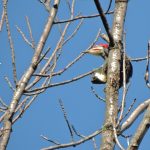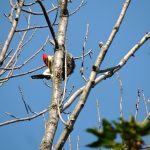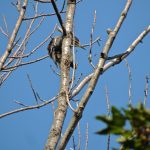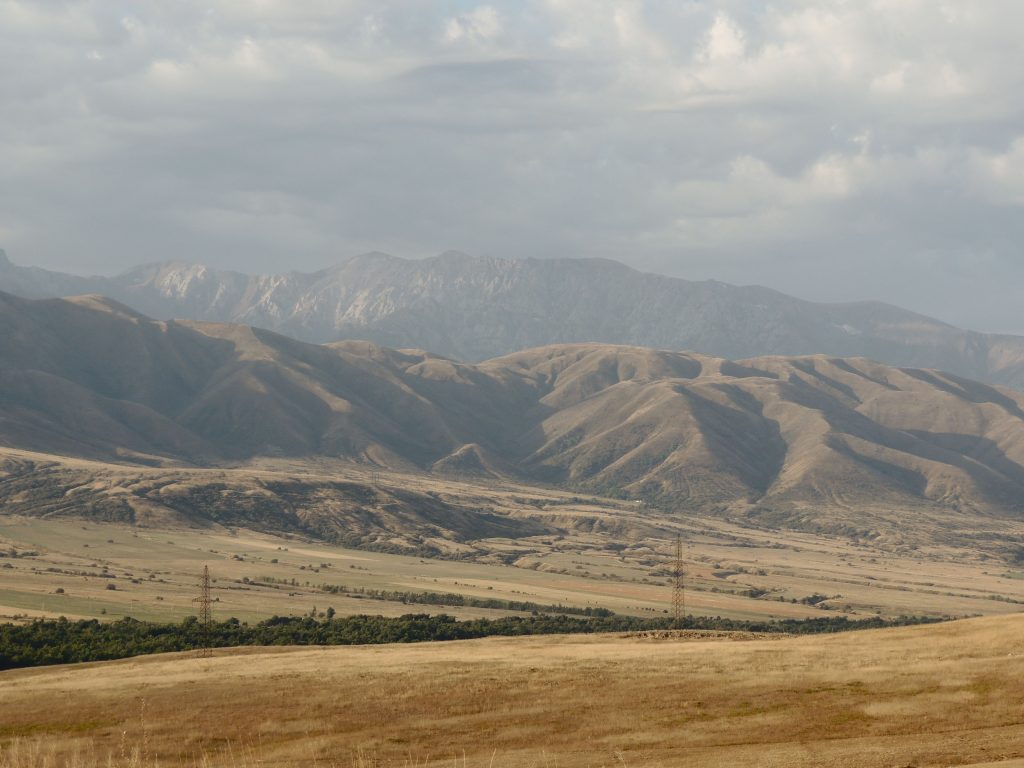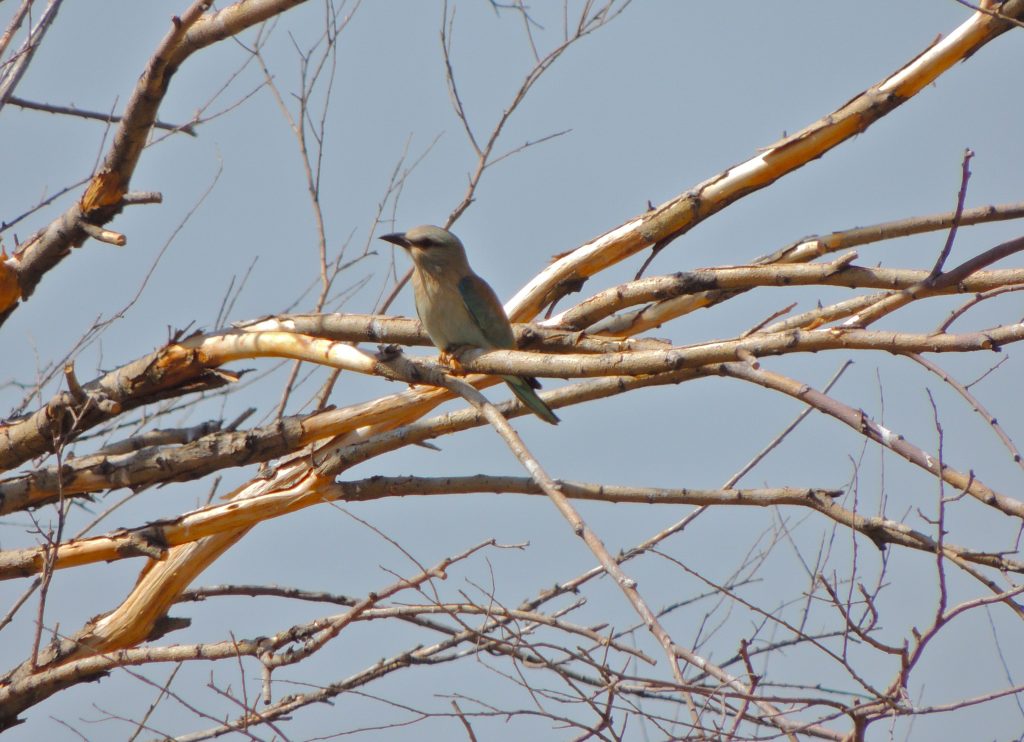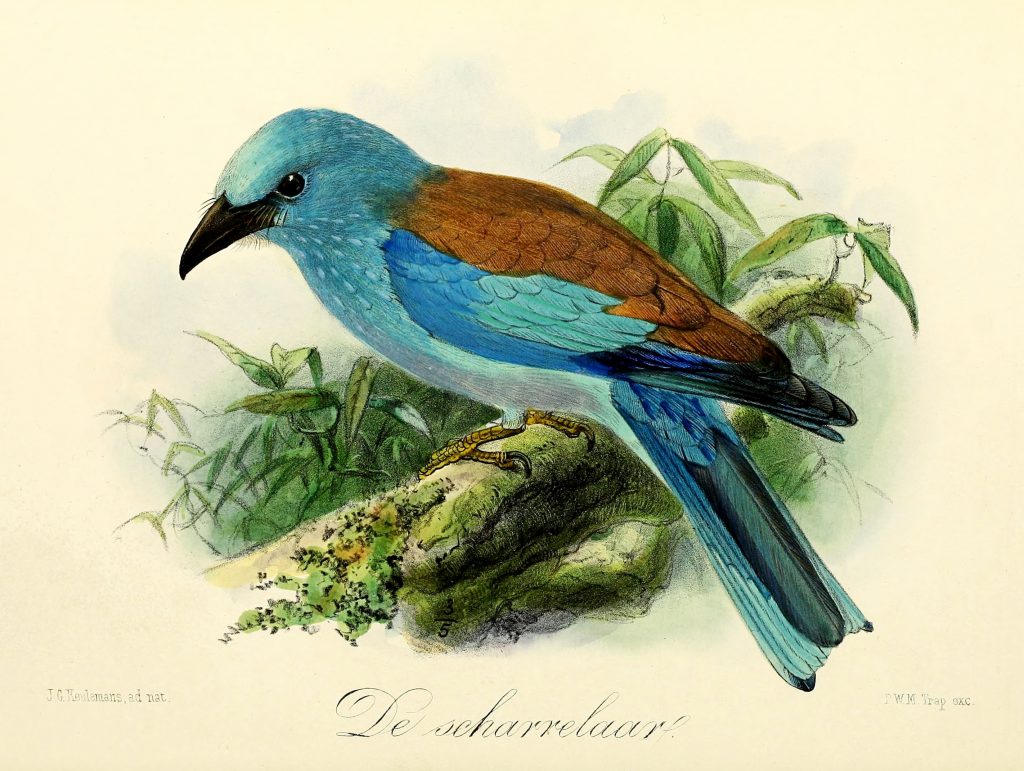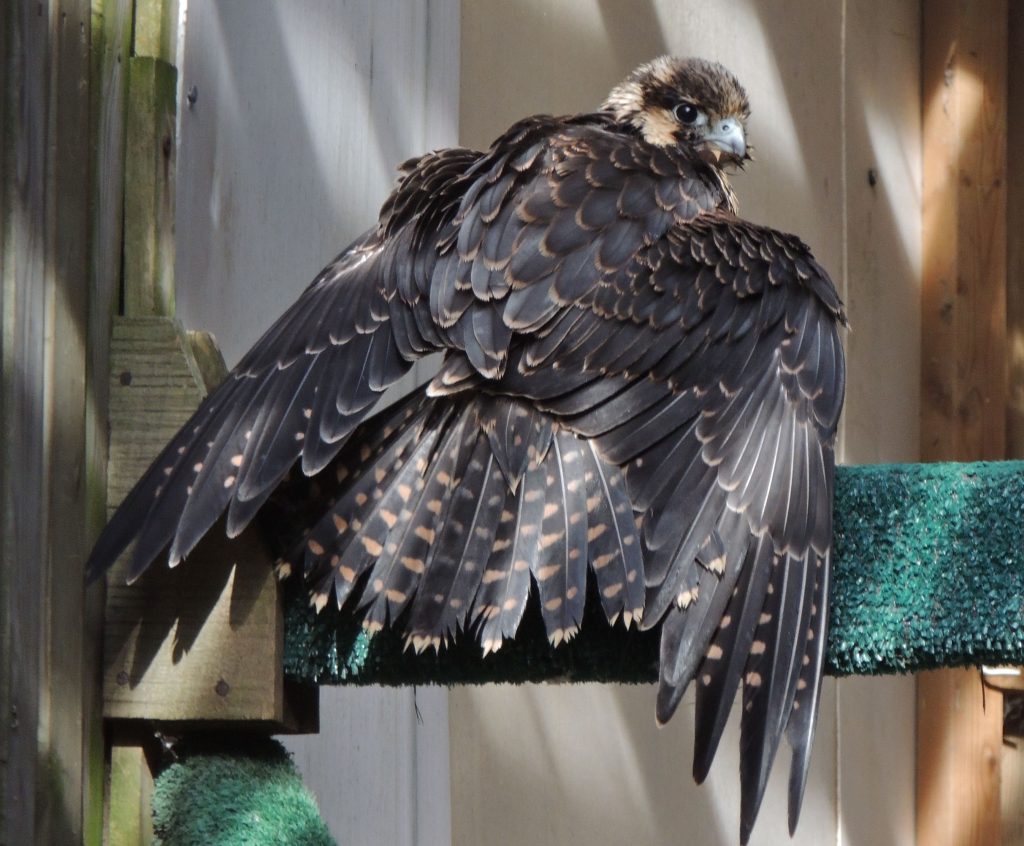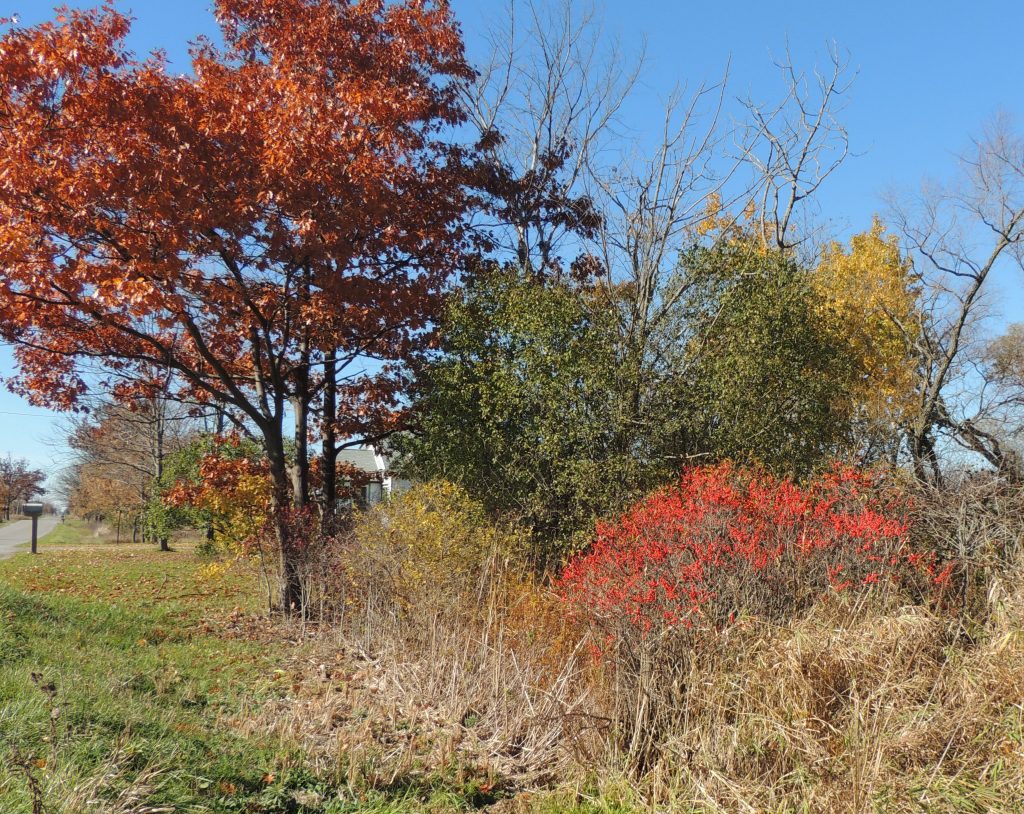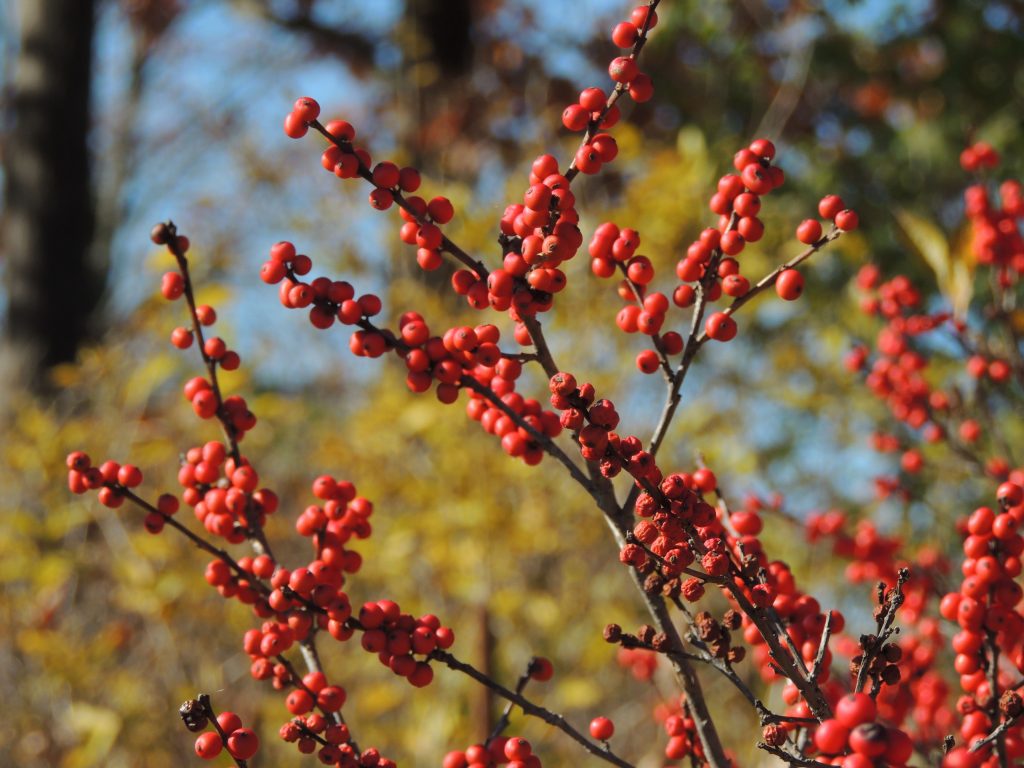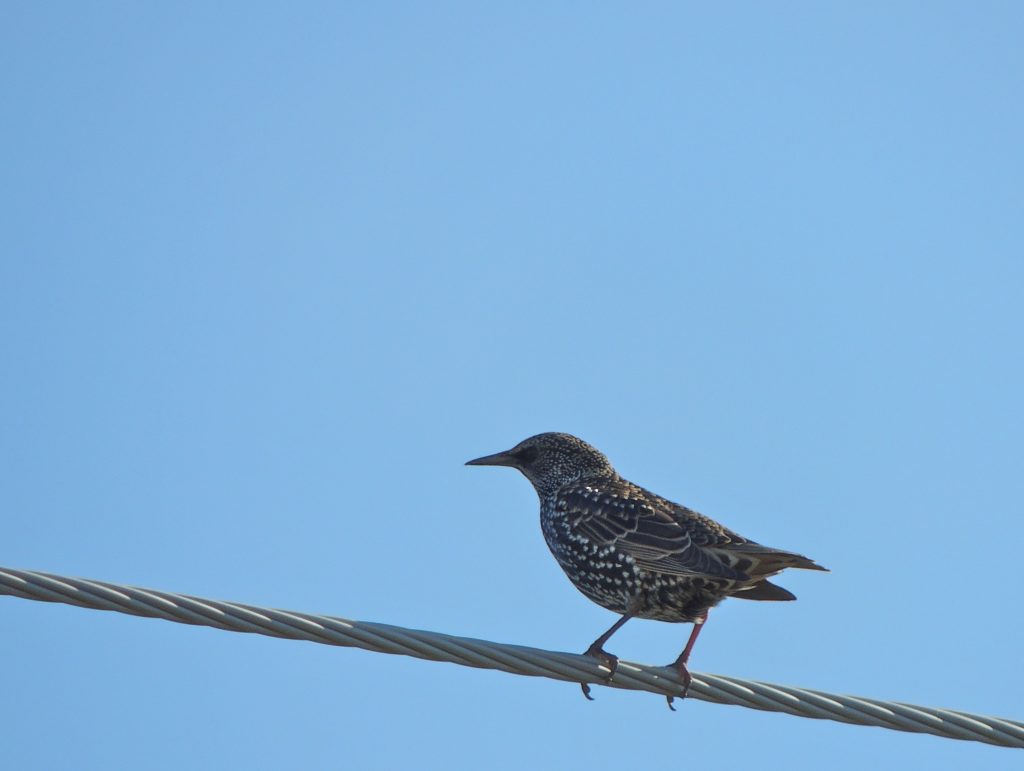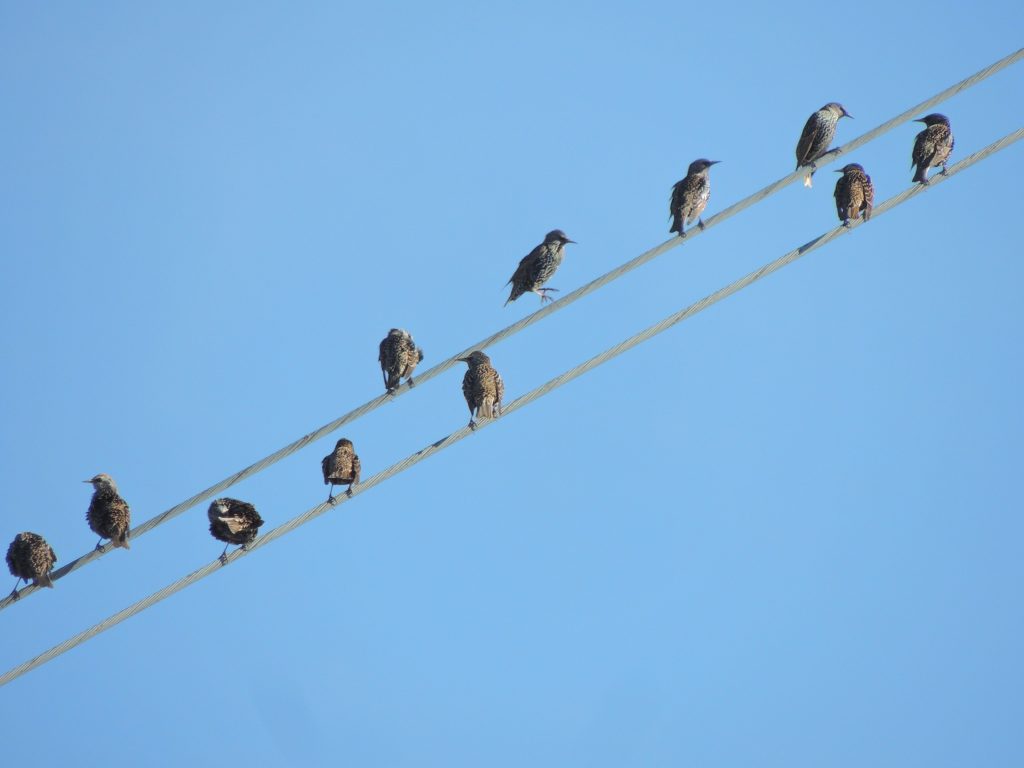October 6 2016. RBG Arboretum, Hamilton ON. It being late November as I write this and since much of the past few weeks has been absorbed by catch-up on the other demands of life, this is a look back at a day’s birding two months ago. The 6th October: 18 degrees C. (65 F), no cloud, a very light west wind; perfect day for a census and a walk through a hardwood forest.
It was, for a while, a bit on the average side: Yellow-rumped Warblers everywhere, a flyover Cooper’s Hawk and handfuls of Blue Jays. But then it seemed to become a woodpecker day: six Red-bellied and four Downy Woodpeckers, a couple of Northern Flickers, three Hairy Woodpeckers and even a quiet, minding its own business, Yellow-bellied Sapsucker. Only one missing – although not for long.
Nearing the half-way point of our census circuit we heard a Pileated Woodpecker’s fanfare call some distance away. And the thing about this loud, ringing cry is that it penetrates forests, carrying proportionately much farther than others of the clan; a distantly heard Pileated could be half a kilometer away. We could only hope that the one we could hear was somewhere in front of us and would stay long enough for us to get a lucky glimpse – that’s usually all you get. Our luck held and we soon found ourselves close enough to hear it chopping wood looking for a meal. I was keen to see how far our luck would carry us and wandered off the path a few meters, looking up and following the chunky hammering until I spotted it wrapped around the thin heights of a dying ash. Ash trees here and across much of the north-east are falling in quick succession to an imported pest, Emerald Ash Borer, and the only good thing to come of this blight might be a feeding bonanza for woodpeckers. I suppose it worked in my favour today. Here it is in a gallery visible only on the website, not if you’re reading this as an email.
